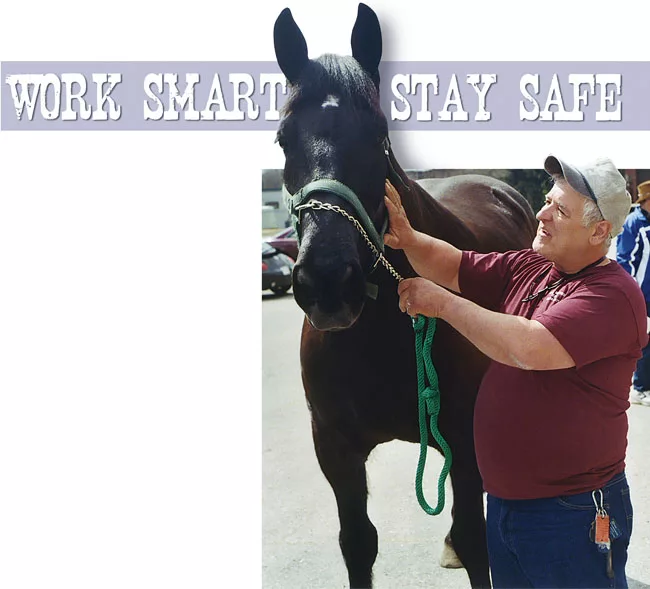American Farriers Journal
American Farriers Journal is the “hands-on” magazine for professional farriers, equine veterinarians and horse care product and service buyers.

In a perfect world, you could get away with saying “I’m a horseshoer — not a horse trainer.” But in a perfect world, an owner or handler would always be present to hold a well-mannered horse, ensuring a safe experience for all.
In the real world, a farrier is often on his or her own, horses are frequently disruptive and accidents happen. That means to protect your physical safety, it is up to you to take a pro-active stance.
Ideally, you want to have an experienced person on hand. This person should know how to stand and position the horse to keep you out of harm’s way. For instance, when you are working on the left front, the handler should be on the opposite side so the horse can be moved away in case of trouble. Conversely, when you are working on the hind left, he or she should stand on the same side in order to readjust the horse’s back end, should it become necessary. And, when holding a horse, its head should be allowed some freedom of movement to keep it from feeling claustrophobic.
Ken Norman, a veteran farrier from West Pawlett, Vt., offers these insights.
“When I first started out, I’d work anywhere, any time,” says the 1991 graduate of the Kentucky Horseshoeing School. “I was young and needed the money, so I’d often find myself standing in the mud or in a dark stall shoeing an unruly horse. Looking back, I realize how lucky I was…